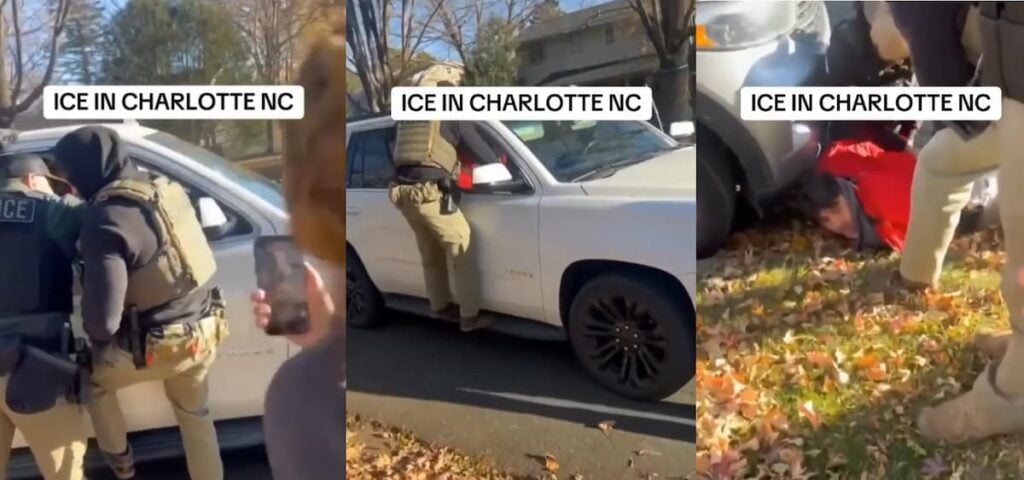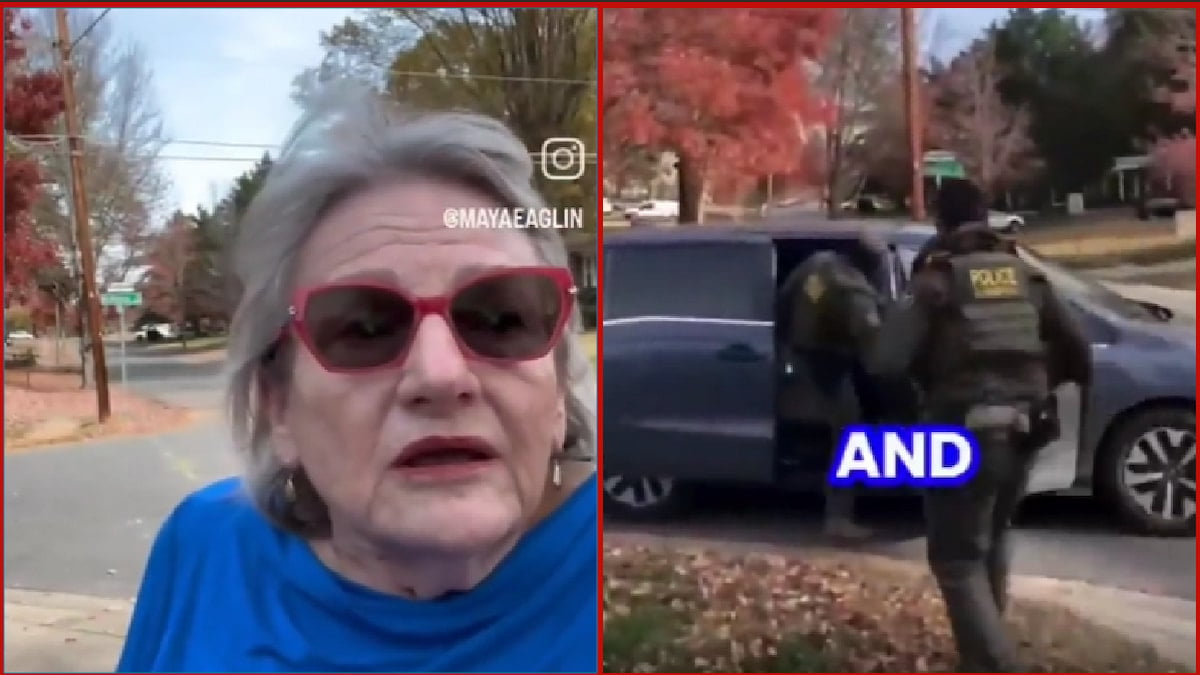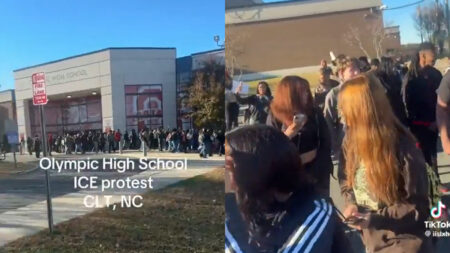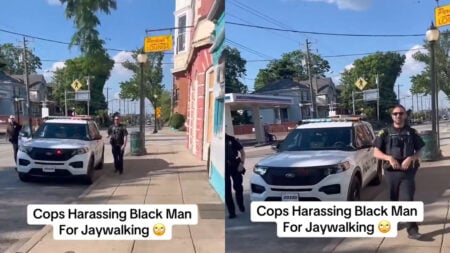A disturbing video recorded in Charlotte, North Carolina, is drawing national attention after showing ICE officers breaking a car window and forcibly removing a man as his family watches in panic, only a few feet away. The footage begins with officers surrounding a parked vehicle before shattering the driver’s window. Inside, a man appears to comply verbally while his son and partner stand nearby, pleading for restraint.
“That’s my father, please, you’re hurting him!” the son cries as officers pull the man through the broken window and onto the pavement. A woman off-camera shouts, “Why would you break his window?” The family insists the man was willing to cooperate without resistance.
Throughout the incident, ICE officers maintain a calm, procedural tone. One can be heard telling the family, “He will be able to call you soon. We’re not hurting him.” But despite the composed voices, the optics are undeniably harsh: tactical gear, shattered glass, and a father yanked from his vehicle as his family watches helplessly.
The Reddit thread has rightly exploded with comments condemning the operation’s intensity. The most upvoted quote, and the one capturing the mood of the discussion, reads:
“They’re just terrorizing people on the streets… They are creating fear. This leads nowhere good.”
Others described the video as “heartbreaking,” “unnecessary,” and “deeply disturbing,” while several users criticized what they view as ICE’s growing reliance on surprise street-level detentions rather than targeted operations.
Some commenters noted similarities to incidents in cities like Chicago and Washington, D.C., alleging a broader pattern of arrests carried out in residential neighborhoods rather than in high-risk environments. Others, meanwhile, pointed out that many mainstream outlets have not covered these incidents in depth, resulting in a patchwork of understanding that is dependent on user-generated footage.
ICE has not yet released a statement addressing the specific Charlotte arrest. The agency’s standard operating procedures allow officers to break vehicle windows if a subject is believed to pose a flight risk or refuses to exit the vehicle after repeated commands.
What remains unclear in this particular case is what precipitated the escalation. The video does not show the moments immediately leading up to the window being broken. Without that context, it’s impossible to determine whether officers followed protocol or whether a less forceful approach might have been viable.
For many viewers, though, the procedural justification doesn’t erase the emotional impact of the imagery: a terrified family, a father pulled violently from his seat, and officers wielding enough force to make a relatively routine arrest appear ominously militarized.
This video joins a growing catalogue of citizen-recorded encounters with immigration enforcement that shape public opinion long before official reports emerge. Whether viewed as evidence of a necessary law enforcement action or an avoidable display of power, the Charlotte arrest underscores the widening gulf between how ICE frames its operations and how many Americans perceive them.
This quote sums things up rather succinctly:
“People don’t know this is happening. Don’t believe your own eyes, they say, but here it is.”








